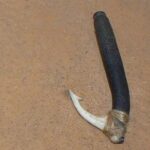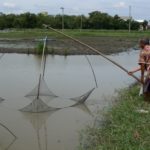Rectangular squid traps are used in the Gulf of Thailand and along the coastline of the Andaman Sea in the same way as semi-circular traps. Both types are used mainly for catching Bigfin reef squid (Sepioteuthis lessoniana) but will also catch Pharaoh cuttlefish (Sepia pharaonic) and various finfish species. For more details, see our article about semi-circular squid traps on our website here.
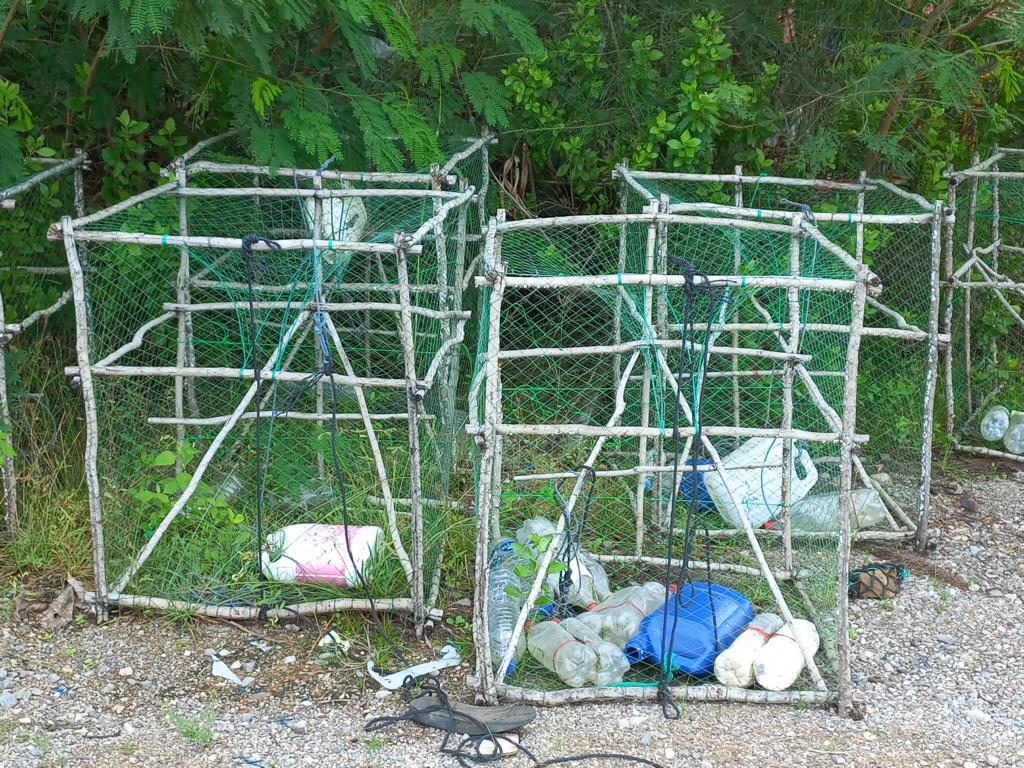
Trap design
The physical outer dimensions of these traps are roughly 0.8×0.6×1 m / 2.6x2x3.3 ft. The wooden sticks used to build the trap are often shoots and sticks of various mangrove species.
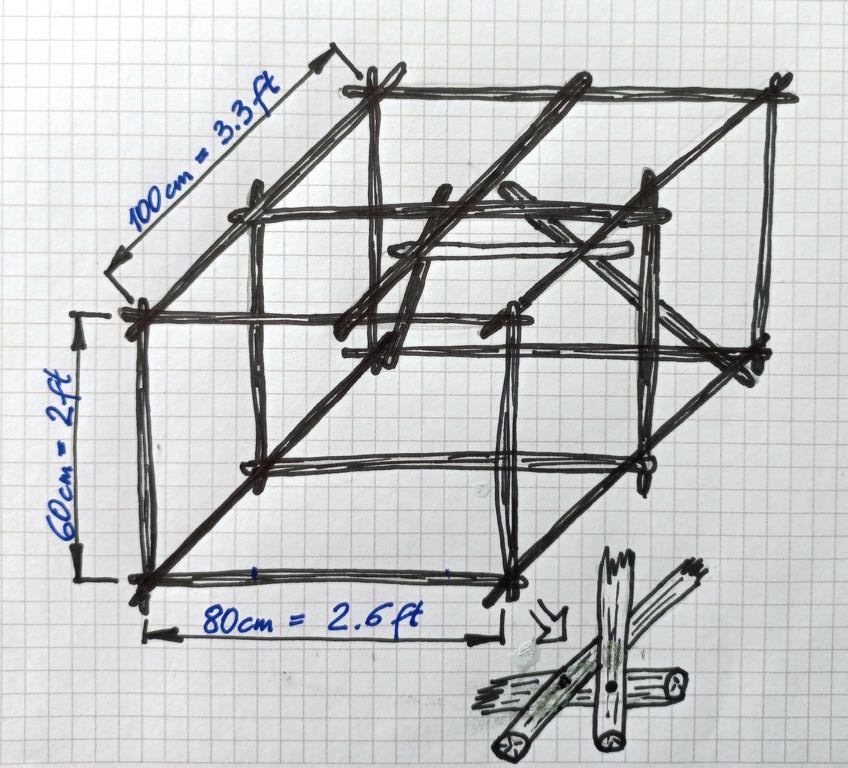
Sequence of building the trap
A wooden frame is often used to lay out the basic dimensions in the same size and keep the sticks together to build the trap. The following sequence of sketches shows how the trap frame is built.
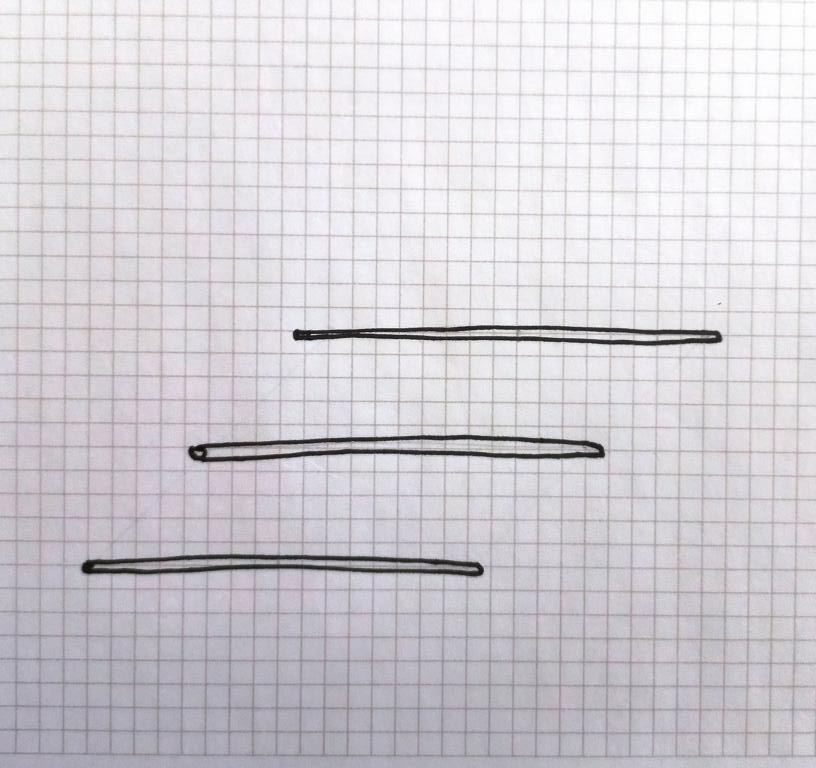
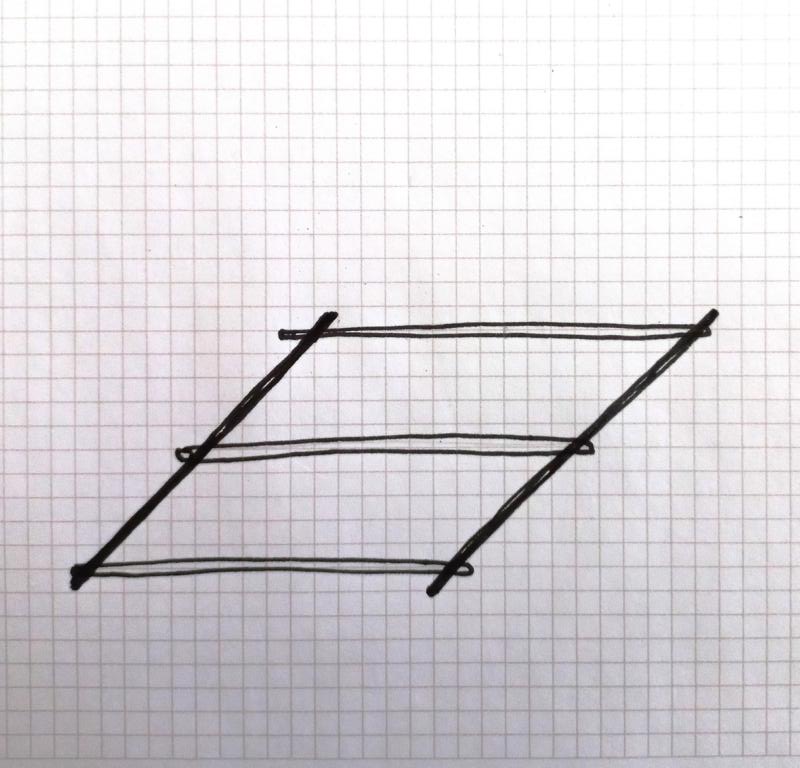
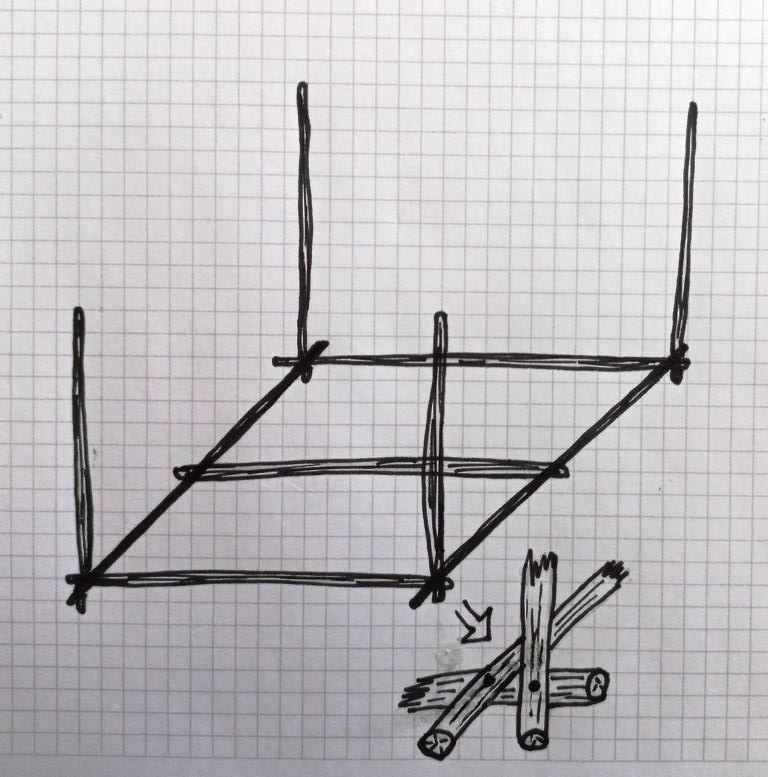
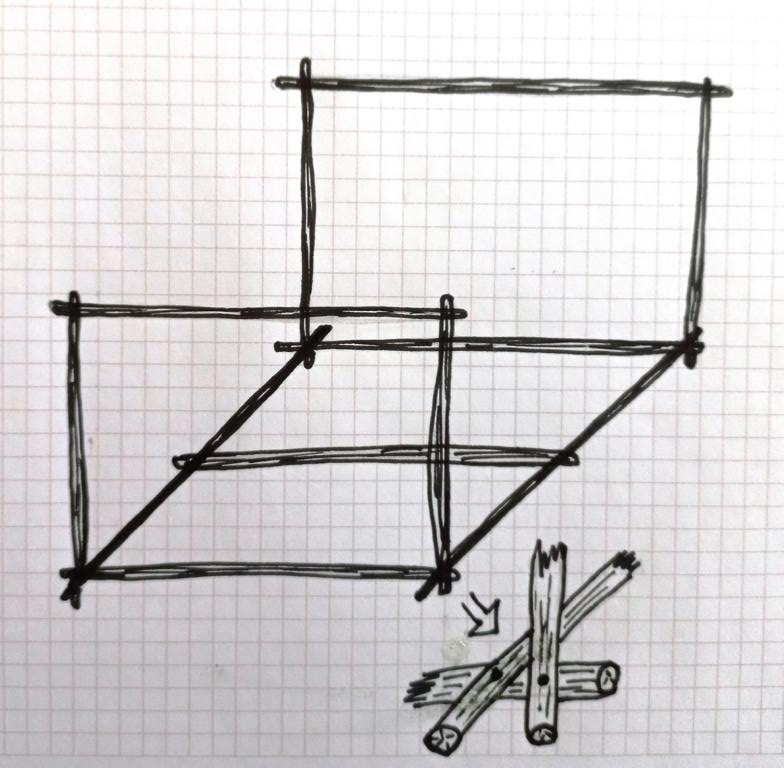
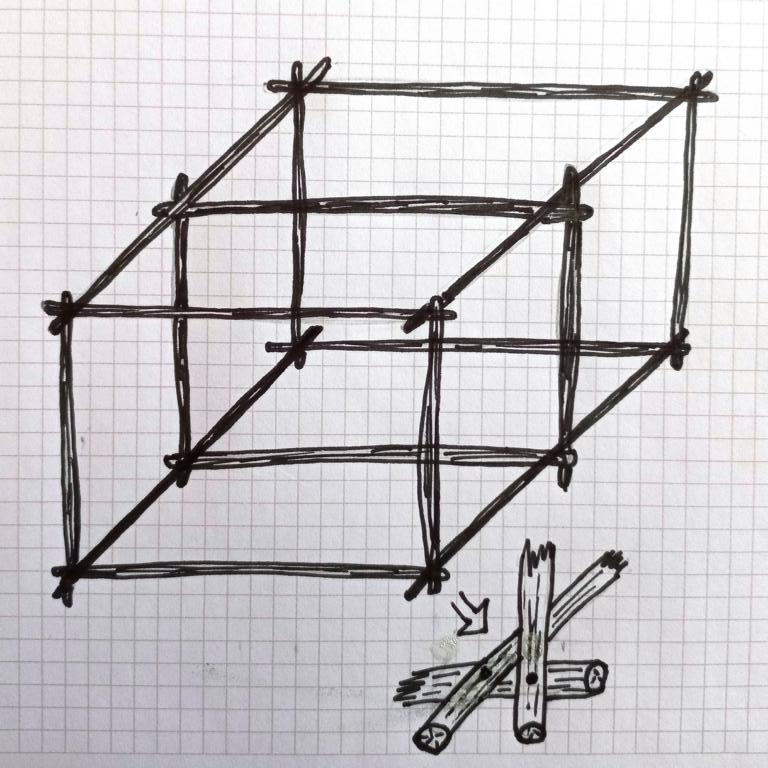
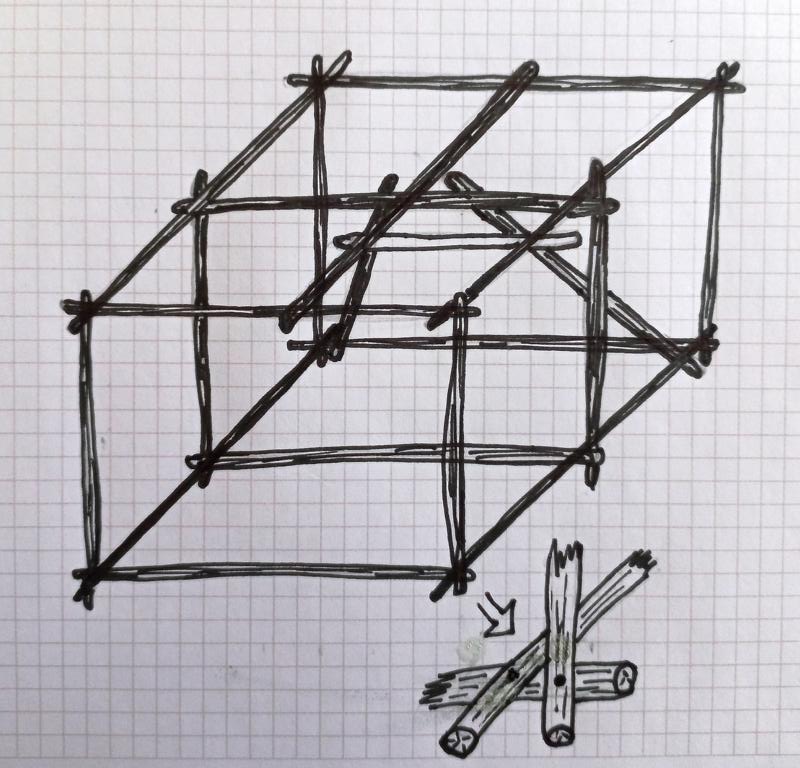
After building the structurally solid frame, the entrance funnel will be crafted with PA netting of approximately 4×4 cm / 1 ½ x1 ½’’ mesh size.
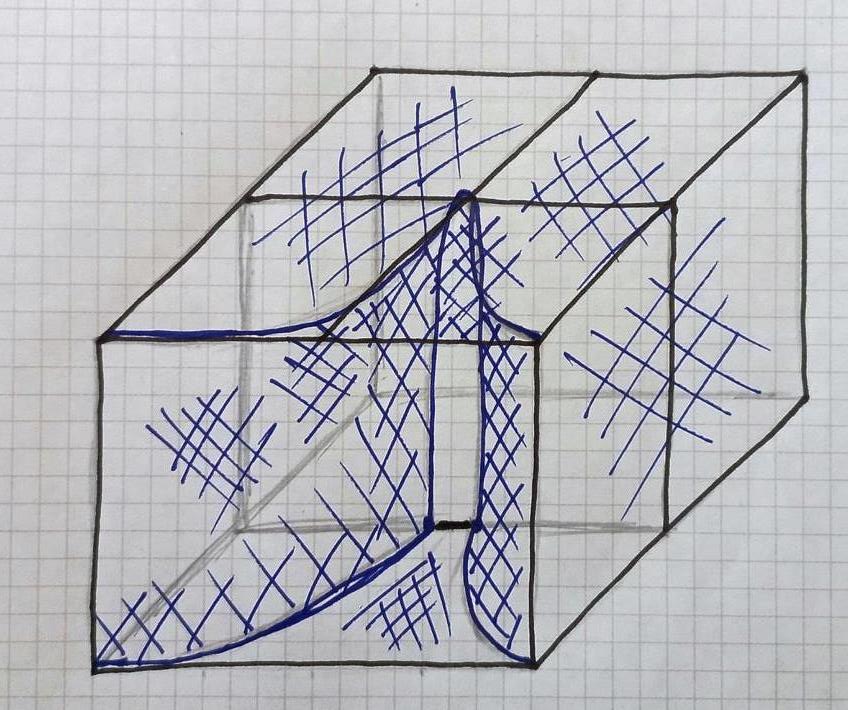
The entrance will be located at the middle frame and is designed as a vertical slit over the whole frame height with a maximum slit opening size of 7 cm/ 2 ¾’’.
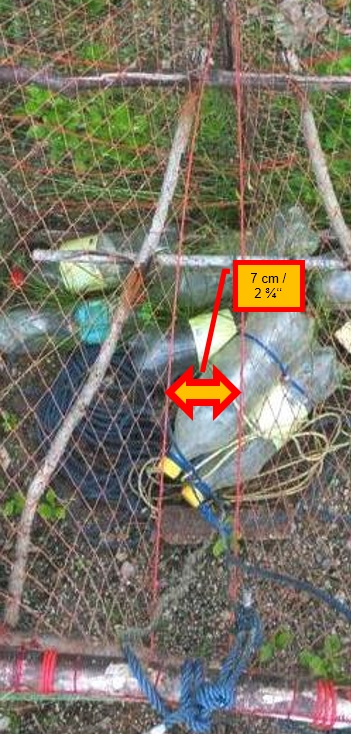
The funnel is created by fixation of the funnel netting at the front frame and curving it outwards to the front frame corner. This results in a nicely curved funnel shape.
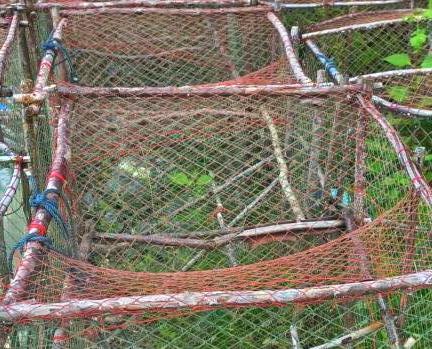
Floating and attracting devices
Many floating devices are being put inside the trap to ensure the rectangular squid trap’s vertical floating. These can be dry coconuts, plastic bottles, old buoys, Styrofoam, or other floating materials.

Unlike semi-circular traps, these materials are not fixated on the upper side of the frame but can float freely. Milky white colors attract male squid, so most floating devices will be this color. Sometimes, even broken China will be put into the trap. In rectangular squid traps, white plastic bags on either side of the entrance funnel will not be used.

To attract female squid to spawn inside the cage, fishtail palm or coconut palm fronds will be attached to at least one side of the trap. The number of sides covered with these fronds varies by region. However, female squid will often spawn outside of the trap. These squid eggs will be collected when retrieving the cage, used as bait for other traps, or released back into the sea.
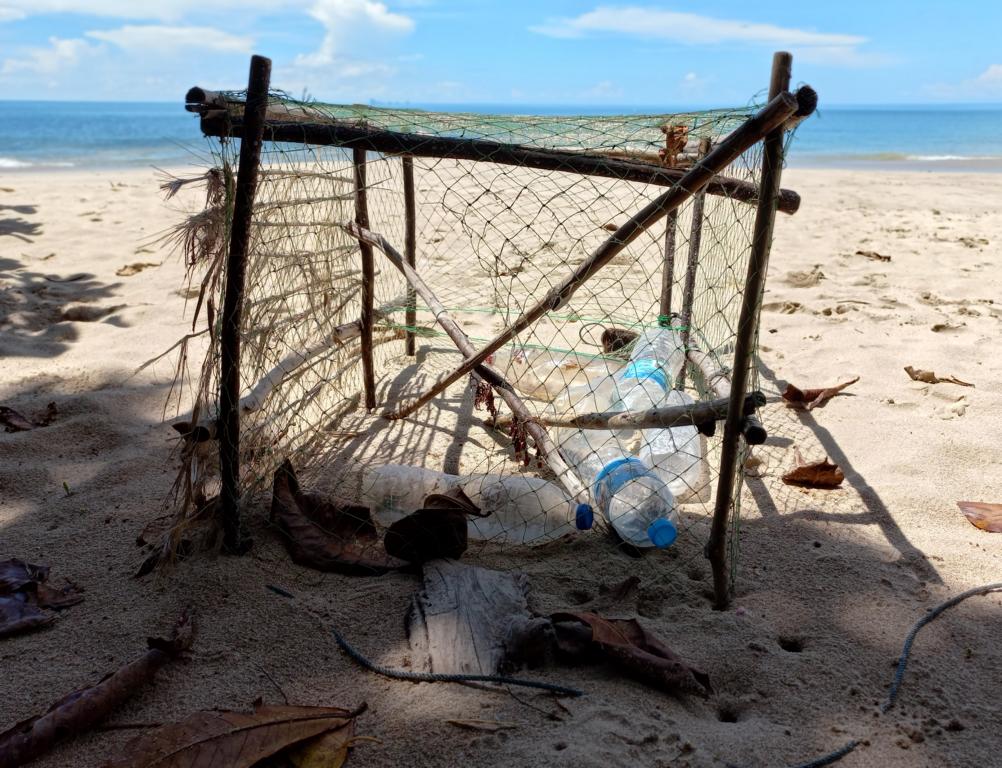
In the Philippines, a palm frond will not be fixed to the outside of the cage but will be put right into a slit in the netting inside and middle of the trap. Outside spawning will, therefore, not occur with this design.
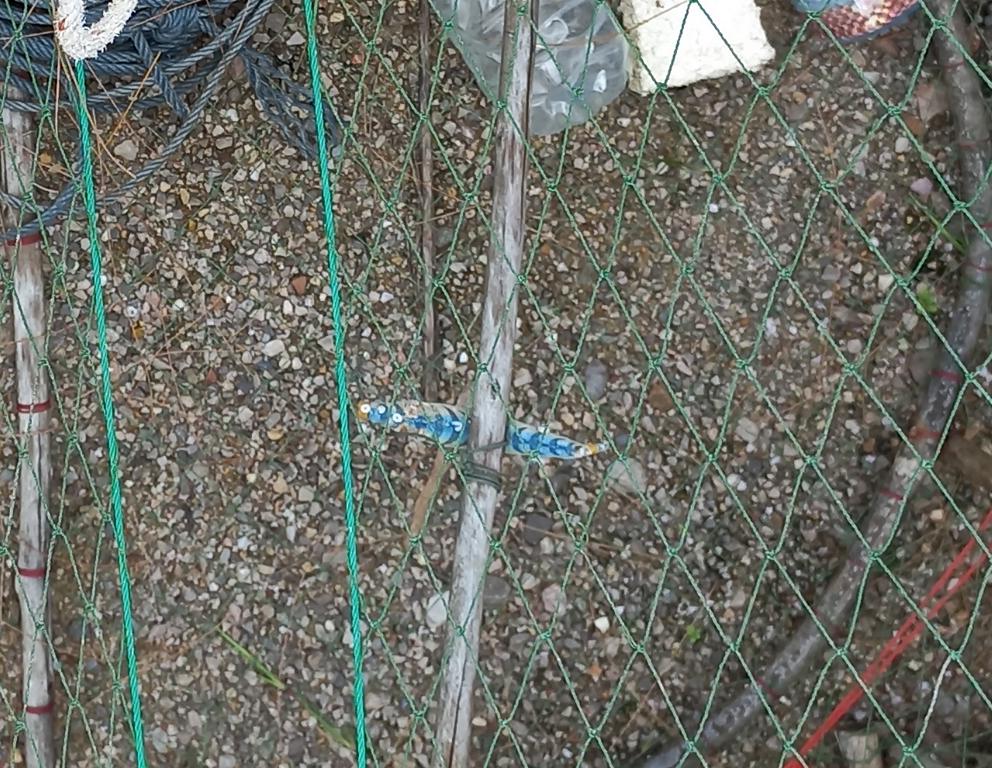
Like in semi-circular traps, squid eggs are also hung in rectangular traps as attractants with white textile strings in the middle of the trap. Additionally, artificial squid lures, which represent shrimp, are sometimes used as feeding bait in both designs of squid traps. The hooks at the lure’s tail end are permanently removed. These lures should only trigger a feeding instinct; the trapping device will catch them.
How to utilize rectangular squid traps
The traps are prepared on land and will be ferried by boat to the trapping location. At this stage, the trap cages with connecting ropes, buoy assembles, and sinker weights with connecting ropes are transported separately on the boat.
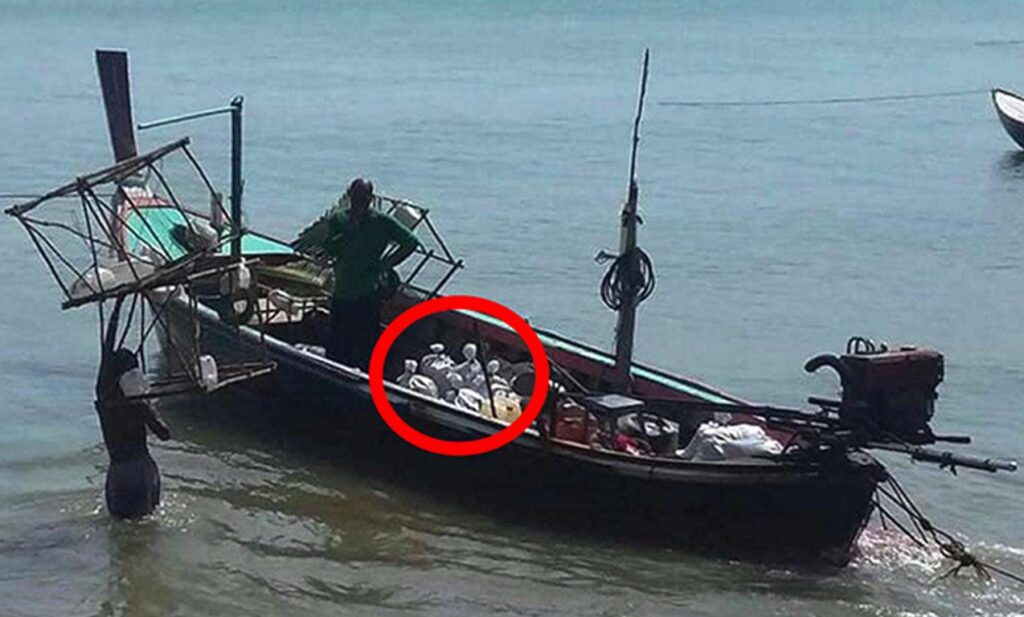
The design and outlay of the trapping cages have already been discussed. The buoys usually consist of a long bamboo pole with a sinker stone in a net on one end and a flag on the other. Floating devices, like plastic bottles or similar, are attached in the middle. Due to the heavy stones as buoy sinkers and the connection to the trap cage and the sandbag sinker below, the whole device’s drift is minimal.

The trap cage will float about 2-3 meters above ground. It is typically held down by a bag with sand, weighing about 10 kg / 22 lbs.

Setting-up principle
The set-up of these squid traps is shown in the following drawing.
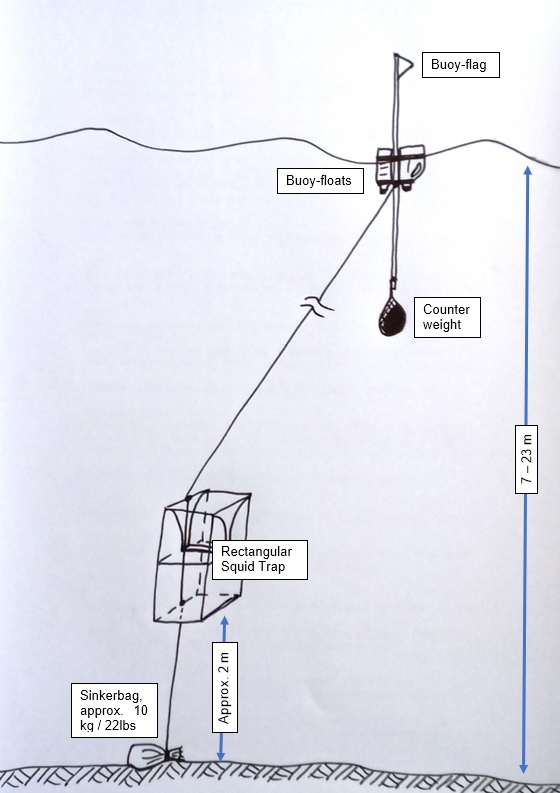
A water depth of 7 – 23 meters was suggested, as this is a typical depth for catching squid in the Gulf of Thailand. The waters of the Andaman Sea coastline are deeper, but lifting these traps from below about 25 meters is impractical.
Every morning, the traps are lifted from the bottom, and the catch is scooped out of the cage. If necessary, the outside of the cage is cleaned with a whip-like brush after re-baiting with fresh squid eggs. This removes juvenile barnacles, mud, algae, and other marine growth. At the latest, after one month, the traps are pulled from the waters. They will be dried on land, properly cleaned, and repaired if required.
Lessons learned from rectangular squid traps in Thailand:
- This type of squid trap will be used alongside semi-circular squid traps in Thailand.
- Rectangular squid traps are not as common as the half-round ones.
- Many more floats are used inside this trap type than others.
- The catch rate could be improved if the palm fronds were set inside the trap instead of outside.
Further readings about catching Cephalopods on this website:
Catching Octopuses in the lagoons
Semi-circular squid traps in Thailand
Catching Octopuses by Sea-Gypsies
.


